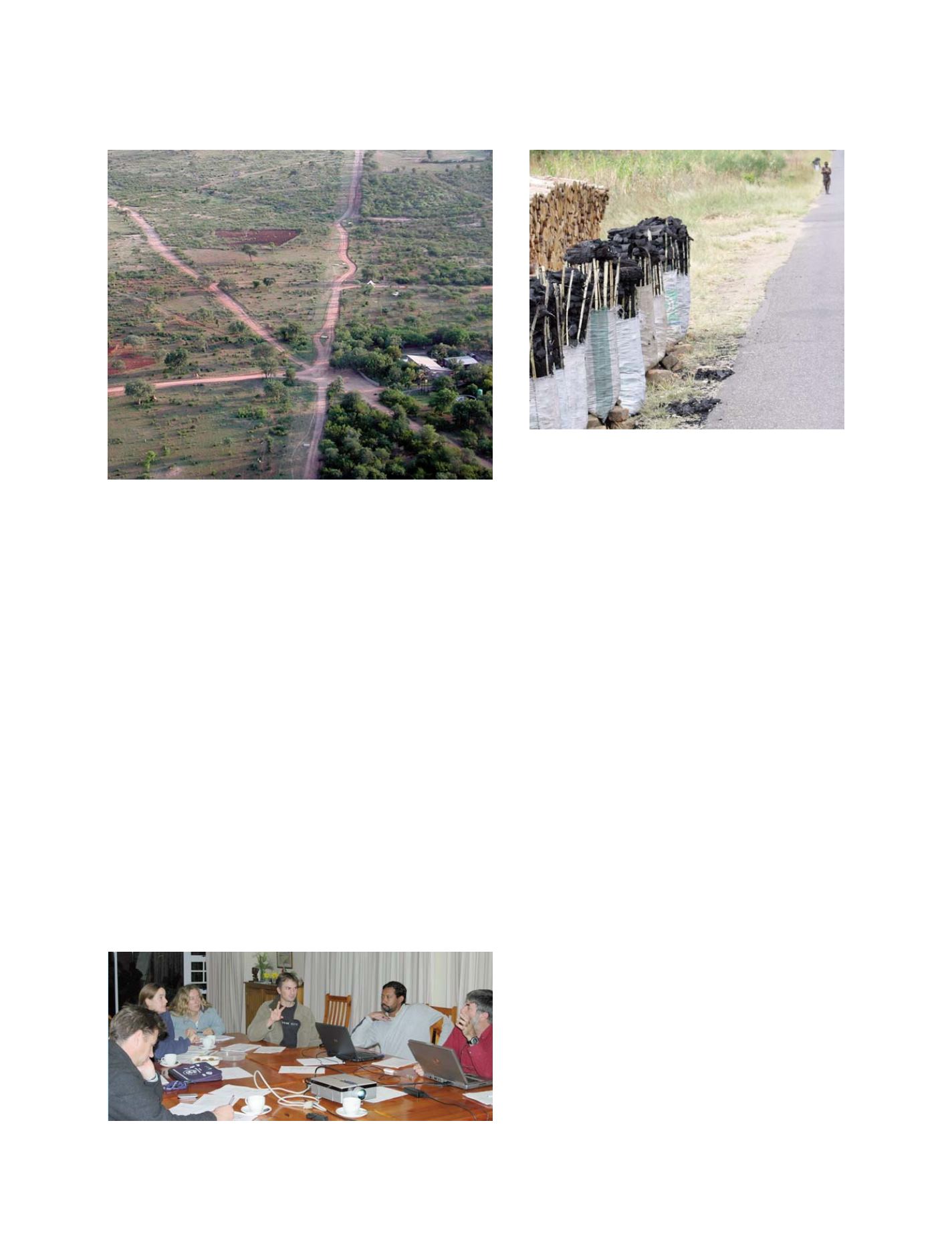

[
] 272
tions. Observations of human interactions with, and
impact on nature (eg settlements, recreation), human
use of goods (eg firewood, food) and services (eg water,
biodiversity) obtained from ecosystems are prerequisites
for
understanding
environmental
change.
‘Comprehensive’ also implies collating, archiving and
interpreting data over long periods, as well as covering
important eco-regions at multiple scales, from point
observations to remotely-sensed landscape observations.
The South African government recognises that a
national Earth observation system must be durable in
its design and management. Hence, SAEON’s network
design promotes the integration of existing environ-
mental observation systems. Stabilised by core funding
and the institutional capacities of its diverse range of
participants, SAEON stands neutral and resilient to the
internal dynamics of individual participants, and lever-
ages contributions to the system.
SAEON coordinates Earth observation systems
through three tiers of stakeholder advisory committees,
namely political, technical and operational. Its scientific
design is continuously refined to be responsive to emerg-
ing environmental issues and corresponds largely with
the societal benefit areas of GEO. The current SAEON
themes are water, soil, nutrient cycling, biodiversity,
disturbance regimes and climate change. Six SAEON
nodes have been designated at distributed locations for
geographical spread. These nodes are offices coordinat-
ing and facilitating observation and information systems
for four terrestrial regions, the coastal zone and offshore
marine systems. Once established, they attract world-
wide research interest.
Developing information systems for Earth
observation
In addition to its nodes, SAEON also coordinates
domain-specific data centres (for example, Southern
African Data Centre for Oceanography). To connect the
distributed data holdings of nodes and data providers,
Integrating Earth observation systems
The most advanced observation network in the Southern African
region is the South African Environmental Observation Network
(SAEON), formally established in 2002 after a few years of deliber-
ation among the research community. The Department of Science
and Technology took the lead among relevant government depart-
ments by mandating and funding the National Research Foundation
to develop SAEON as an institutionalised network of departments,
science councils, universities, research institutes and industrial part-
ners. The Department of Science and Technology’s vision was to
establish an Earth observation platform supporting the various
mandates of the different participating organisations. These organi-
sations range from departments with environmental concerns
(Environmental Affairs and Tourism, Water Affairs and Forestry,
Agriculture, Minerals and Energy, Provincial and Local Government)
to the cohort of science councils, universities and large commercial
and parastatal businesses, and overall, for public good.
SAEON operates on a number of guiding principles. It aims to be
comprehensive in scope by covering terrestrial, atmospheric and
oceanic systems, inclusive of recent-past environmental conditions
that may be inferred from geological and palaeontological observa-
Southern Africa’s environment is continuously changed by diverse and adjoining
land uses, here separated by only a fence and illustrating very different impacts
on the same ecosystem
Photo: JC Pauw
The SAEON team promotes the archiving and accessibility of environmental data
The firewood and charcoal trade
Photo: JC Pauw
Photo: JC Pauw
S
OCIETAL
B
ENEFIT
A
REAS
– B
IODIVERSITY
















